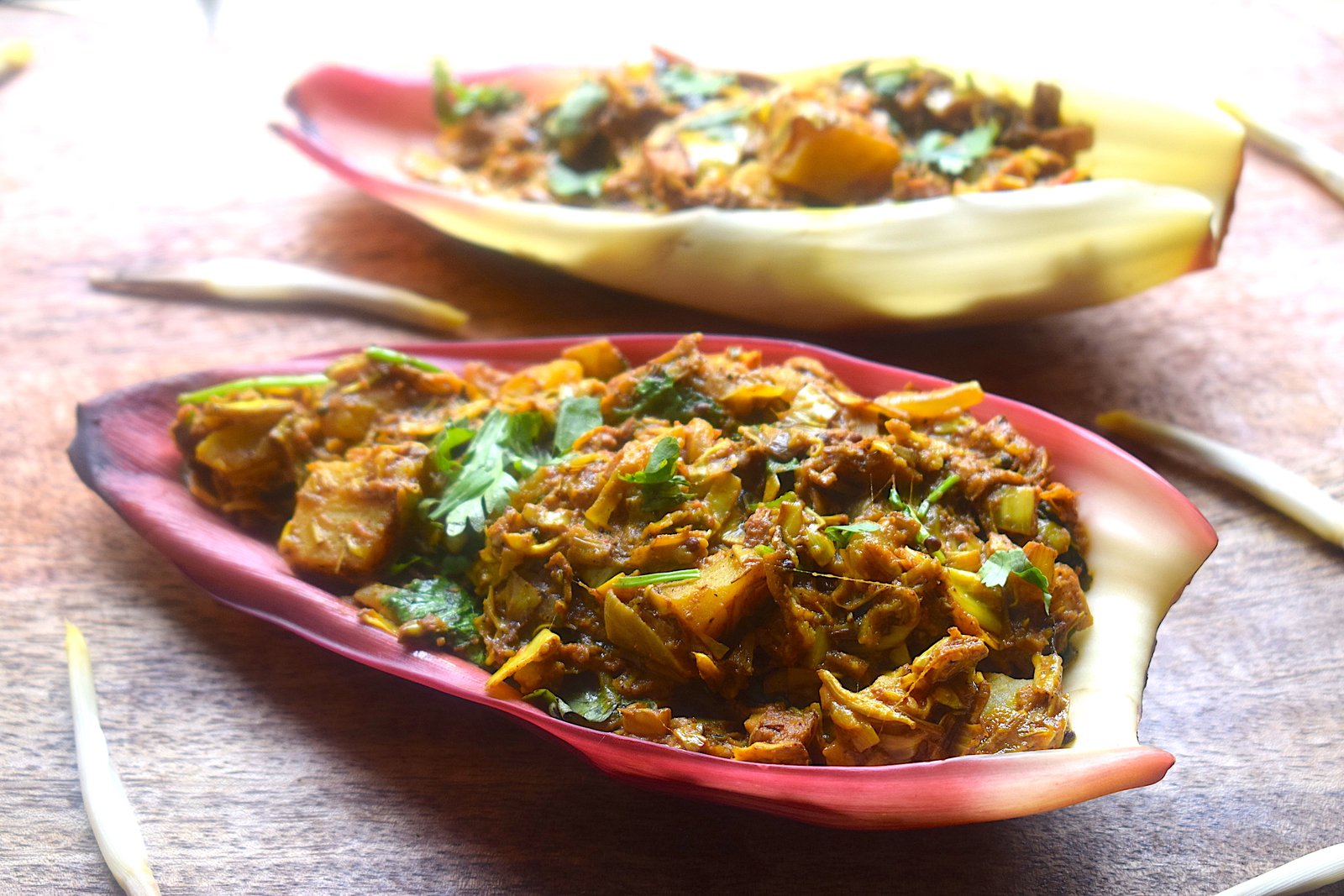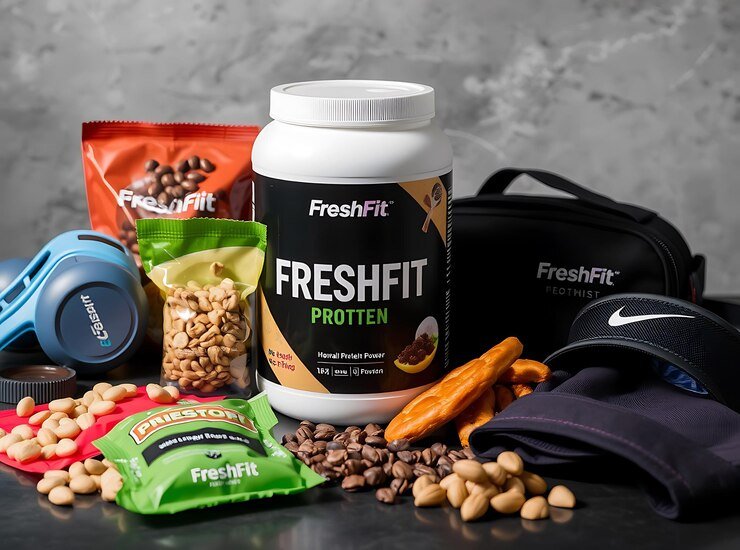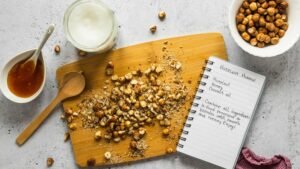Introduction to Banana Flower
Banana flower, also known as banana heart, is an extraordinary ingredient that often flies under the radar in many kitchens. With its deep purple hue and unique texture, this edible blossom offers a wealth of culinary possibilities waiting to be explored. Rich in nutrients and packed with health benefits, banana flower has been celebrated for centuries in various cultures around the world. Whether you’re a seasoned chef or just curious about new ingredients to spice up your meals, preparing banana flower can open up a realm of flavors and textures that will elevate your dishes to new heights. Let’s dive into how you can transform this delightful flower into delicious creations!
Health Benefits of Banana Flower
Banana flower, often overlooked, is a nutritional powerhouse. Packed with antioxidants, it combats oxidative stress in the body.
Rich in vitamins A and C, banana flowers support skin health and boost immunity. They are also a great source of dietary fiber, aiding digestion and promoting gut health.
This unique blossom contains essential minerals like potassium and calcium. These contribute to heart health by regulating blood pressure levels.
Moreover, studies suggest that banana flowers may help regulate menstrual cycles due to their natural hormone-balancing properties.
Incorporating this versatile ingredient into your diet can lead to enhanced overall wellness while adding an exciting flavor profile to your meals.
Different Ways to Prepare and Cook Banana Flower
Banana flower, with its striking purple exterior, offers a delightful culinary experience. One popular way to prepare it is by steaming, which helps preserve its nutrients while softening the petals for salads or stir-fries.
Another method involves frying. Sliced banana flowers can be coated in chickpea flour and spices before being deep-fried to create crispy fritters—a perfect snack or appetizer.
For those who love soups, adding chopped banana flower to broths enhances flavor and texture. It melds beautifully with coconut milk and spices for a comforting dish.
Sautéing is also an excellent option. When combined with onions, garlic, and tomatoes, banana flower transforms into a savory side dish that pairs well with rice or flatbreads.
You can even pickle banana flowers! The tangy crunch adds an unexpected twist to any meal. With these diverse cooking methods, you can truly celebrate the versatility of this ingredient.
Traditional Recipes Using Banana Flower
Banana flower, or “kela ka phool,” is a staple in many traditional cuisines. It adds a unique flavor and texture to various dishes that highlight its versatility.
One popular recipe is the South Indian dish called banana flower poriyal. In this preparation, chopped banana flowers are sautéed with mustard seeds, curry leaves, and grated coconut for a delightful side that complements rice well.
In Bengali cuisine, “mochar ghonto” takes center stage. This dish features finely minced banana flowers cooked with potatoes and spices until beautifully aromatic.
Another cherished option comes from Thai cooking: the spicy banana flower salad known as “yum hua plee.” This refreshing salad combines shredded banana blossoms with lime juice, chili, and peanuts for an explosion of flavor.
These traditional recipes showcase how banana flower can transform everyday meals into something extraordinary while remaining rooted in cultural heritage.
Creative and Unique Dishes with Banana Flower
Banana flower is a versatile ingredient that can elevate your dishes in unexpected ways. Embrace its unique flavor by making banana flower tacos. Shred the petals, sauté them with spices, and stuff them into soft corn tortillas for a delightful twist.
For something sweet, try banana flower fritters. Dip the tender petals in a light batter and fry until golden brown. Serve them with honey or maple syrup for an indulgent treat.
Another creative option is to incorporate banana flower into salads. Tossed with fresh greens, citrus segments, and a tangy dressing, it adds texture and nutrition to your meal.
You can even experiment with smoothies! Blend cooked banana flowers with yogurt and fruits for a nutritious drink that packs a punch of nutrients while surprising taste buds.
Tips for Buying, Storing, and Preparing Banana Flower
When buying banana flower, look for ones that are firm with a vibrant purple hue. Avoid any that show signs of browning or wilting. Freshness is key to ensuring the best flavor and texture in your dishes.
To store banana flower, wrap it tightly in plastic wrap or place it in an airtight container. Refrigeration helps maintain its freshness for several days. If you can’t use it right away, freezing is an option; however, blanching first will help preserve color and nutrients.
Preparation begins by peeling back the outer layers to reveal the tender inner petals. Remove any tough parts and soak them in water mixed with lemon juice to prevent browning. This step also helps reduce bitterness before cooking.
A gentle rinse under cold water can remove any residual dirt or sap, making it ready for your culinary creations. With these tips at hand, you’re set to explore the world of delicious banana flower dishes!
Types of Dishes that use Banana Flower
Banana flower is a versatile ingredient that shines in various dishes. Its unique flavor and texture make it an excellent addition to savory meals.
In many Asian cuisines, banana flower is often used in salads. The delicate petals add crunch and visual appeal, complementing fresh herbs and spices.
Curries also benefit from the inclusion of banana flower. Its ability to absorb flavors makes it a fantastic choice for rich, coconut-based sauces.
You can find banana flowers in stir-fries as well. They bring an interesting twist when combined with vegetables or proteins like tofu and chicken.
Some regions even incorporate them into fritters or pakoras, creating delightful snacks that are crispy on the outside yet tender inside. Each preparation highlights the flower’s distinct taste while enhancing the overall dish experience.
Step-by-Step Guide to Preparing Banana Flower
Preparing banana flowr is a straightforward process. Start by selecting a fresh, vibrant flower from the store or farmers’ market. Look for one that feels firm and heavy.
Once you have your banana flowr, carefully peel away the outer layers. These are usually tough and need to be removed to get to the tender inner petals. Set aside any tiny bananas if they’re attached; they can be used later in dishes.
Next, chop the remaining petals into small pieces. Soak them in water with lemon juice for about 10 minutes to prevent browning and reduce bitterness. Rinse well afterward.
You may find some hard parts at the base of each petal—remove these as they can be tough when cooked. Now you’re all set! The prepared banana flowe is ready for cooking or adding to your favorite recipes.
Delicious Recipes with Banana Flower
Banana flowr is a versatile ingredient that can elevate many dishes. One popular recipe is banana flowr fritters, where the petals are coated in chickpea flour and spices before being deep-fried to crispy perfection.
For a hearty meal, try making banana flower curry. Sauté onions and tomatoes with aromatic spices, then add chopped banana flowers for a rich, flavorful dish. Serve it over rice or with flatbread for a comforting experience.
Another intriguing option is to prepare a salad using steamed banana flowers mixed with coconut, lemon juice, and green chilies. This refreshing dish brings out the subtle flavors of the flower while providing crunch.
Don’t forget about soups! Banana flower lends itself beautifully to creamy soups when blended with herbs and garnished with toasted nuts for added texture. Each recipe showcases its unique qualities while delivering delicious results you won’t forget.
Buying and Storing Banana Flower
When it comes to buying banana flowe, freshness is key. Look for flowers that are firm and vibrant in color. A healthy banana flowr should have a deep purple hue with tightly packed petals. Avoid any that appear wilted or discolored.
Once you’ve selected your banana flowr, proper storage is essential to maintain its quality. Wrap the flower loosely in a damp paper towel and place it inside a plastic bag. This will help retain moisture without causing excess condensation.
If you’re not using it right away, consider refrigerating the wrapped banana flowr. It can last about one week when stored correctly. For longer storage, you might want to blanch and freeze the prepared parts of the flower for future use in dishes.
Always remember to check on your stored banana flowes periodically—freshness ensures delicious results when cooking!
Conclusion
Banana flowr is a versatile ingredient that can transform everyday meals into something extraordinary. With its numerous health benefits and unique flavor profile, it’s no wonder this tropical delicacy is gaining popularity in various cuisines around the globe.
From traditional dishes to innovative recipes, banana flowe offers endless culinary possibilities. Whether you’re preparing a savory curry or experimenting with creative salads, you’ll find that incorporating banana flowr enhances both taste and nutrition.
As you explore the different ways to prepare and cook this amazing vegetable, remember to pay attention to freshness when buying and storing your banana flowe. A little knowledge on how to handle them can go a long way in achieving delightful results in your kitchen.
So why not give it a try? Unleash your creativity with this beautiful bloom and enjoy all the deliciousness it brings!







